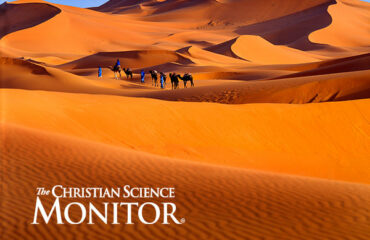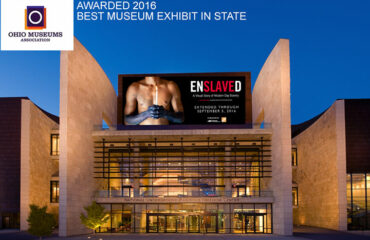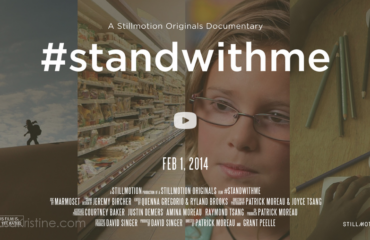
Humanitarian photographer Lisa Kristine of Mill Valley had captured the dignity of indigenous people in 100 countries on six continents, yet never realized that modern-day slavery was in the shadows everywhere she traveled.
That all changed when Kristine, whose color-saturated photos are set to go on world tour this year, met an abolitionist while exhibiting her work at the 2009 Vancouver Peace Summit. The advocate told Kristine that 27 million people are enslaved worldwide – more than twice the estimated number of people taken from Africa during the Atlantic slave trade between the 16th and 19th centuries.
“I almost fell over,” said Kristine, whose images hang in the Palace of Bhutan, have been auctioned at Christie’s to benefit the United Nations, and have drawn accolades from the Dalai Lama. “It blew me away that I, whose whole job is to see, didn’t know.”
Within a week, she was in the Los Angeles offices of the advocacy group Free the Slaves, offering to use her 19th century, 4-by-5 camera to expose slavery: the impoverished children and adults given false promises of money, education and a better life, only to be tricked into indentured labor and held in captivity by fear, force and coercion.
Illegal mine

Escorted by local representatives from Free the Slaves, she found children in the Himalayas lugging slabs of slate heavier than themselves down the mountains, via crude harnesses attached to their foreheads made from sticks, rope and torn cloth.
At a brick kiln in Nepal, she photographed workers in 130-degree heat and choking dust, stacking 18 bricks on their head at a time and walking the loads to waiting trucks.
“All I could see was Dante’s ‘Inferno,’ ” Kristine said.
She saw trafficked children in tattered shirts reeling in 1,000-pound fishing nets on the shore of Lake Volta in Ghana, freezing in the early dawn after all-night fishing expeditions.
Avoiding patrolmen with automatic weapons, she quickly snapped off a few shots with her 35mm camera of men, women and children panning for gold in huge, watery pits contaminated by mercury in Ghana.
‘No end in sight’
“These slaves are in plain sight, some are hidden deep in the jungles – some of them don’t even understand they are enslaved because they have been laboring all their lives – with no pay, and with no end in sight,” Kristine said.
The images she brought back stunned the world, including Archbishop Desmond Tutu, who wrote in the preface to her 2010 book, “Slavery”:
“On behalf of God, (I have a hotline), thank you for all the people you are going to liberate and thank you for all the rest of us who will be truly free only when those in bondage are finally free.”
After visiting her Sonoma gallery, a young girl started a lemonade stand to fight slavery, and collected money for Free the Slaves, Kristine said.
Soon, her slavery images will embark on a multiyear, world exhibition, “Enslaved,” in conjunction with several nongovernmental organizations, including Voices for Freedom and Free the Slaves. (The tour locations have not been revealed yet.)
A film in production about a Nepalese girl trafficked to India includes a character based on Kristine, played by Gillian Anderson.
Kristine is often asked whether any of the people she photographed has been set free.
“Kofi,” she says.
She photographed Kofi taking a bath at a rescue center for trafficked children in Ghana after he had been forced into fishing. After his photo was taken, he was reunited with his family, and abolitionists taught his parents to turn away traffickers who come knocking with false promises of good jobs for their children.
False promises
Such promises are also made in this country, Kristine said, describing what she found in shopping malls in Washington, D.C., where affable men approach young girls and sweep them off their feet – and right into the sex trade.
“That’s why I won’t ever let my children hang out at the mall,” said Kristine, who along with her partner has adopted a son, 6, from Guatemala, and a daughter, 4, from Ethiopia.
In addition to her global slavery exhibit, Kristine also has a new book coming out, “Bhutan – Repository of the Spirit,” with a forward by the Queen Mother of Bhutan, Tshering Yangdon. She has a flight booked to India this month to document a gathering of neuroscientists and 10,000 monks interested in studying the effects of contemplation and compassion on the brain.
It’s a subject close to Kristine’s heart. The day after she graduated from the Fashion Institute of Design and Merchandising in San Francisco, the city native spent the next five years photographing and meditating in Europe and Asia.
“I photographed every day. I did tai chi. I spent 30 days in silence, the last 1o in a cave – a lot of sitting on pillows to ultimately confront myself,” she said.
And the trip left her with a four-word mantra: “I am a photographer.”
“I would do this anyway, even if nobody paid me for it. It’s just worked out that photography has been very gracious to me.”
Read more: http://www.sfgate.com/art/article/Lisa-Kristine-photographs-slavery-4167748.php#ixzz2H8o7xzgy




